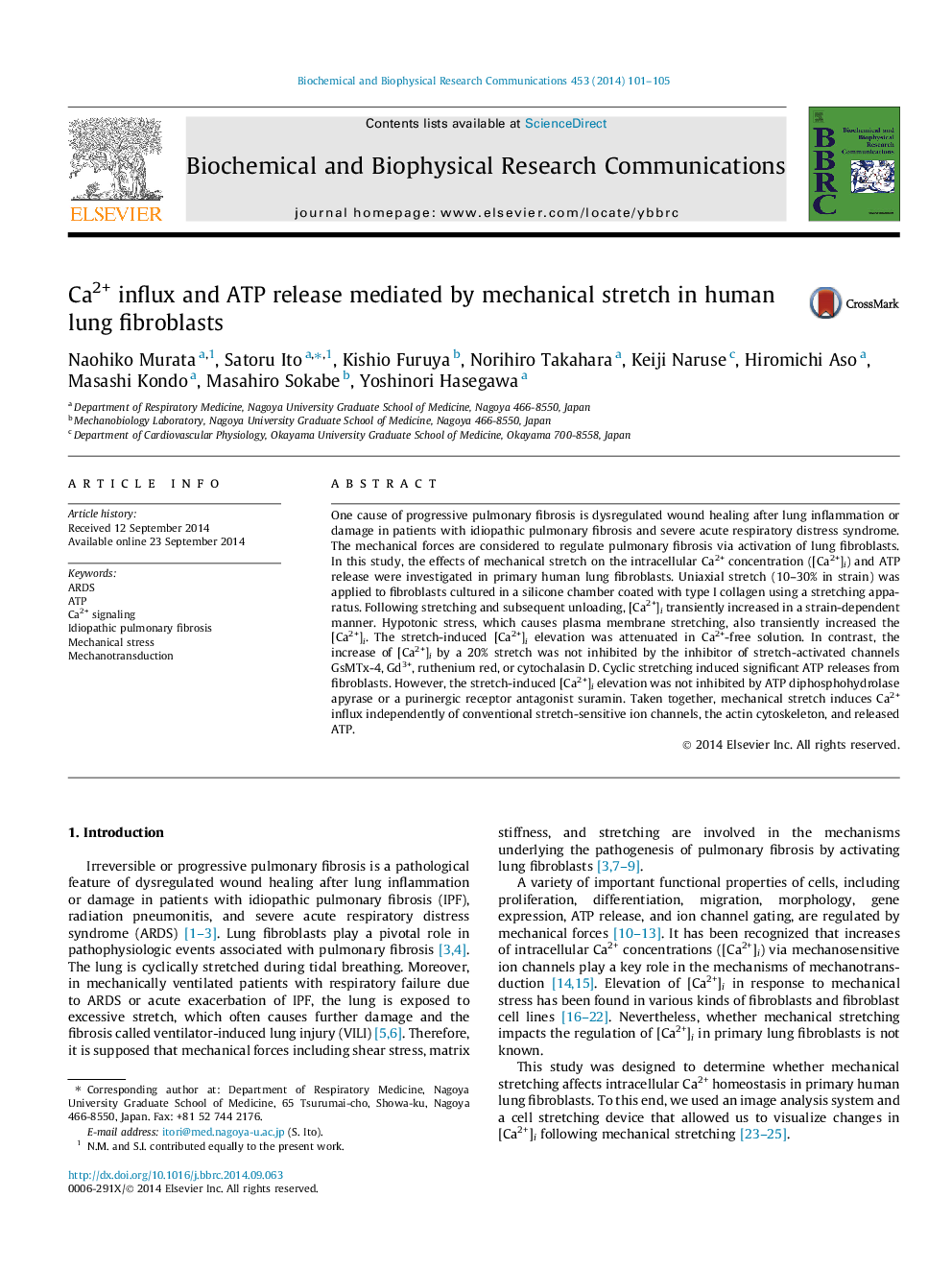| Article ID | Journal | Published Year | Pages | File Type |
|---|---|---|---|---|
| 1928318 | Biochemical and Biophysical Research Communications | 2014 | 5 Pages |
•Uniaxial stretching activates Ca2+ signaling in human lung fibroblasts.•Stretch-induced intracellular Ca2+ elevation is mainly via Ca2+ influx.•Mechanical strain enhances ATP release from fibroblasts.•Stretch-induced Ca2+ influx is not mediated by released ATP or actin cytoskeleton.
One cause of progressive pulmonary fibrosis is dysregulated wound healing after lung inflammation or damage in patients with idiopathic pulmonary fibrosis and severe acute respiratory distress syndrome. The mechanical forces are considered to regulate pulmonary fibrosis via activation of lung fibroblasts. In this study, the effects of mechanical stretch on the intracellular Ca2+ concentration ([Ca2+]i) and ATP release were investigated in primary human lung fibroblasts. Uniaxial stretch (10–30% in strain) was applied to fibroblasts cultured in a silicone chamber coated with type I collagen using a stretching apparatus. Following stretching and subsequent unloading, [Ca2+]i transiently increased in a strain-dependent manner. Hypotonic stress, which causes plasma membrane stretching, also transiently increased the [Ca2+]i. The stretch-induced [Ca2+]i elevation was attenuated in Ca2+-free solution. In contrast, the increase of [Ca2+]i by a 20% stretch was not inhibited by the inhibitor of stretch-activated channels GsMTx-4, Gd3+, ruthenium red, or cytochalasin D. Cyclic stretching induced significant ATP releases from fibroblasts. However, the stretch-induced [Ca2+]i elevation was not inhibited by ATP diphosphohydrolase apyrase or a purinergic receptor antagonist suramin. Taken together, mechanical stretch induces Ca2+ influx independently of conventional stretch-sensitive ion channels, the actin cytoskeleton, and released ATP.
